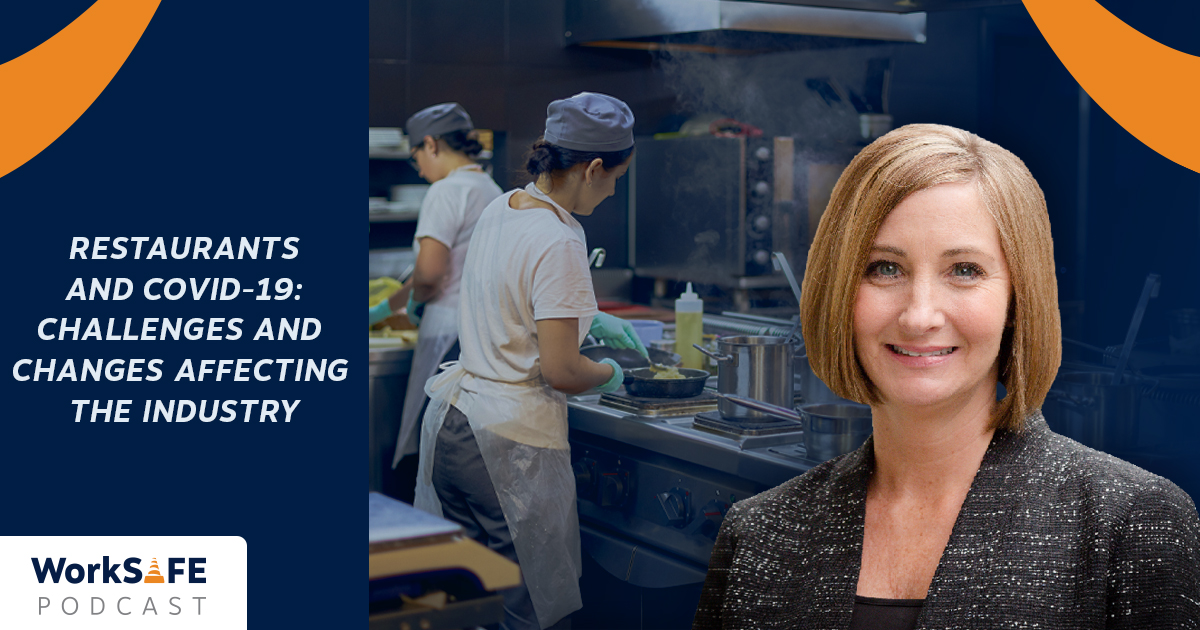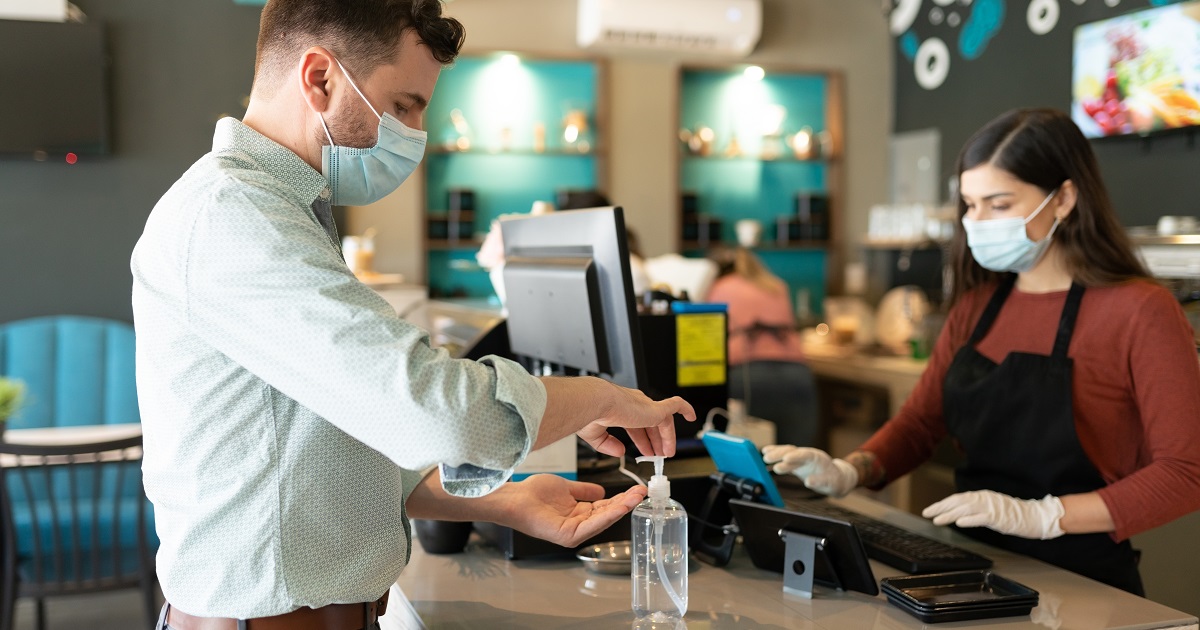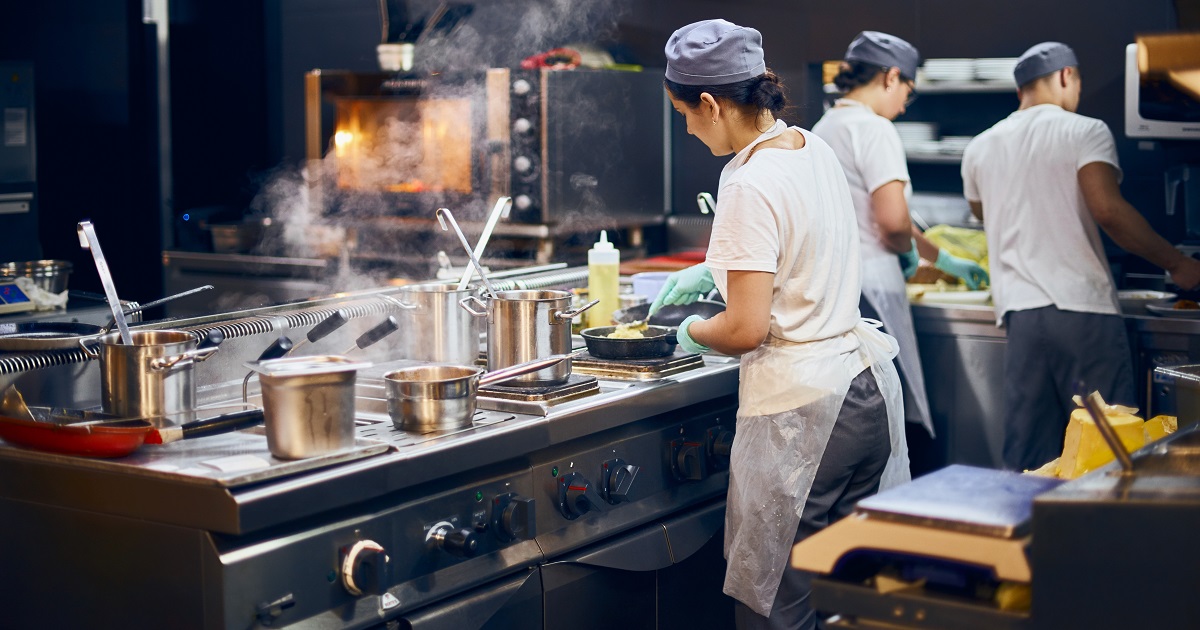For Media Inquiries
Contact Revee White, Director of Marketing and Communications at rwhite1@mem-ins.com or 573.499.4190.
The restaurant industry has seen some of the most notable changes caused by the COVID-19 pandemic. Dining rooms are closed to customers. Carryout and delivery are the new normal. Some businesses have been forced to close their doors. What challenges are restaurants facing? How can they make sure that their kitchens – and doors – stay open?
On this episode of the WorkSAFE Podcast, we’re chatting about the changes and challenges seen in the restaurant industry. Our host, Heather Carl, is joined by Herman Styles and Ben Thies. Styles has more than 48 years of experience in the restaurant industry. Thies has more than 30 years of industry experience. Both gentlemen work for Colton’s Steak House and Grill, and are company partners.

First, we’ll talk about the everyday challenges restaurants are facing. Then, we’ll share how restaurants are accommodating takeaway orders. Finally, we’ll discuss how COVID-19 affects the restaurant experience for customers.
Listen to this episode on the WorkSAFE Podcast, or read the show notes below.
Restaurants before and after COVID-19: new challenges in the industry
COVID-19 has forced many restaurant businesses – large and small – to make changes to the way they operate. Small businesses often see the most impact. They usually don’t have a dedicated safety professional. Without one, the responsibility for workplace safety falls to the owner or manager.
At Colton’s, the biggest change has been several new safety measures. Employees need to follow new safety rules all the time. It is the only way for them to be effective. This includes changing gloves, wiping each table with a fresh towel, and wearing masks. Managers must make sure these safety rules are followed. They also have to manage orders and staff.
Same restaurants, new risks
Restaurants are also seeing new risks walking into their doors. High-traffic surfaces present customers and wait staff with exposure risk. “Our menus and everything that goes on the table has to be sanitized between customers,” Styles said. “We took a lot of things off the tables – the ketchup, the salt and pepper shakers, steak sauces.” Colton’s invested in throw-away menus. Staff wipe any menu with plastic on it between uses.
Styles said that staff behavior is critical. Habits form over time. They are also hard to break. Colton’s teaches safety measures. They aren’t difficult to do. For example, refilling drinks was once a simple process. If a customer wanted a refill, then staff added the drink to their original glass. But now, new glasses replace old ones. This prevents any cross-contamination.
Remembering each safety measure can be a challenge, though – especially during busy times.
Supply shortages
Cleanliness has always been a priority for Colton’s. However, cleaning products, soaps, and sanitizers have been in short supply since the start of COVID-19. They are hard for the average customer to locate. It has been even more difficult for restaurants to find what they need.
If their usual products are out of stock, then they have to find new ones. Thies says Colton’s has had a hard time locating hand soap. They’ve chosen different items, but only after extensive research. They also need extra masks and gloves for employees to serve customers. Both continue to be hard to find.

Limited staff
A shortage of staff has affected nearly all of the Colton’s locations. Thies mentioned that almost all of their restaurant locations are hiring. Some are operating at only 50% capacity, and still have a hard time finding enough staff to work. Having enough people for each shift is a constant struggle. And bringing in extra hands means that they are always training new hires. Some new hires have restaurant experience – and some don’t. Training takes time. It also takes extra hands.
Better unemployment benefits are also challenging the industry. COVID-19 caused the loss of many jobs and business closures. As a result, the government has offered assistance. Stimulus and unemployment funds now rival the salaries of part-time restaurant workers. These funds are available to any worker. Employees who work a lot of hours get the same amount as those who only work a few. Some choose to collect the assistance rather than risk their personal safety to staff local eateries.
Making adjustments: delivery and carryout
Many restaurants have added delivery and carryout to their services. Customers enjoy food from their favorite spots. They also have limited contact with others. However, it does require extra hands. At Colton’s, the staff meets cars in the parking lot. They must carefully pack their orders and include any extras – like ketchup, napkins, or cutlery. If customers were inside the restaurant, then it would be easy to provide them. But once they leave, these items are now out of reach. Customers would either have to use their own items or go without.
Providing carryout options also increases supply costs. More single-use containers are needed. Plastic silverware needs to be included with each order. Condiments that are usually kept in a bottle now need to be individually packaged. Thies says that these costs affect every restaurant business.

More risks lead to more nerves
COVID-19 worries have introduced a concerning new trend in restaurants: customers are nervous.
When they do visit a restaurant, they often scan the room. They want to see that other patrons are following safety guidelines, like wearing masks. Masks also prevent people from seeing one another’s facial expressions, and some things can get lost in communication. Tensions run high. Thies has seen arguments break out in the dining room. Everyone wants to have a safe dining experience. However, customers don’t always agree on how to have one.
Customers also have different opinions depending on their locations. Colton’s provides masks to anyone who doesn’t have one. Hand sanitizer is also widely available. In his travels, Thies has seen that customers’ thoughts about safety measures depend on the state.
Making the best of a challenging situation
Restaurants continue to make changes due to COVID-19. For Thies, sanitation a priority. He also stressed the importance of continued training. This applies to current employees and new hires. Train them on the proper techniques to use. Styles acknowledged that more work is needed to keep people safe. In the past, employees coming to work with a cold or cough may have been overlooked. This isn’t acceptable. More care and attention must be paid to ensure COVID-19 isn’t spread in restaurants.
Styles sees these changes as necessary adjustments, and is optimistic about the future – “It’s not bleak, it’s just different.”
Free resources for restaurants and COVID-19
Our Resource Library contains free sample safety policies, podcast episodes, starter kits, and resources just for the food service industry. For resources specific to safety during COVID-19, visit our COVID-19 Resource Center for Employers.